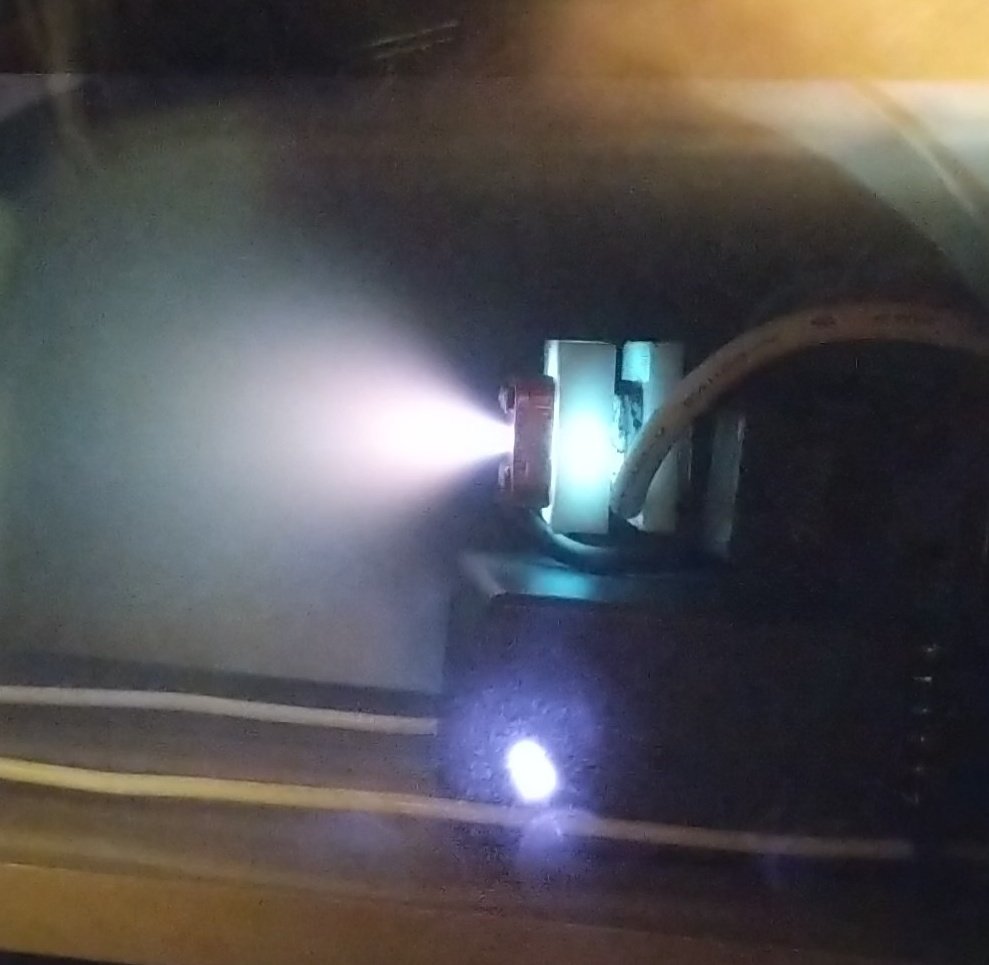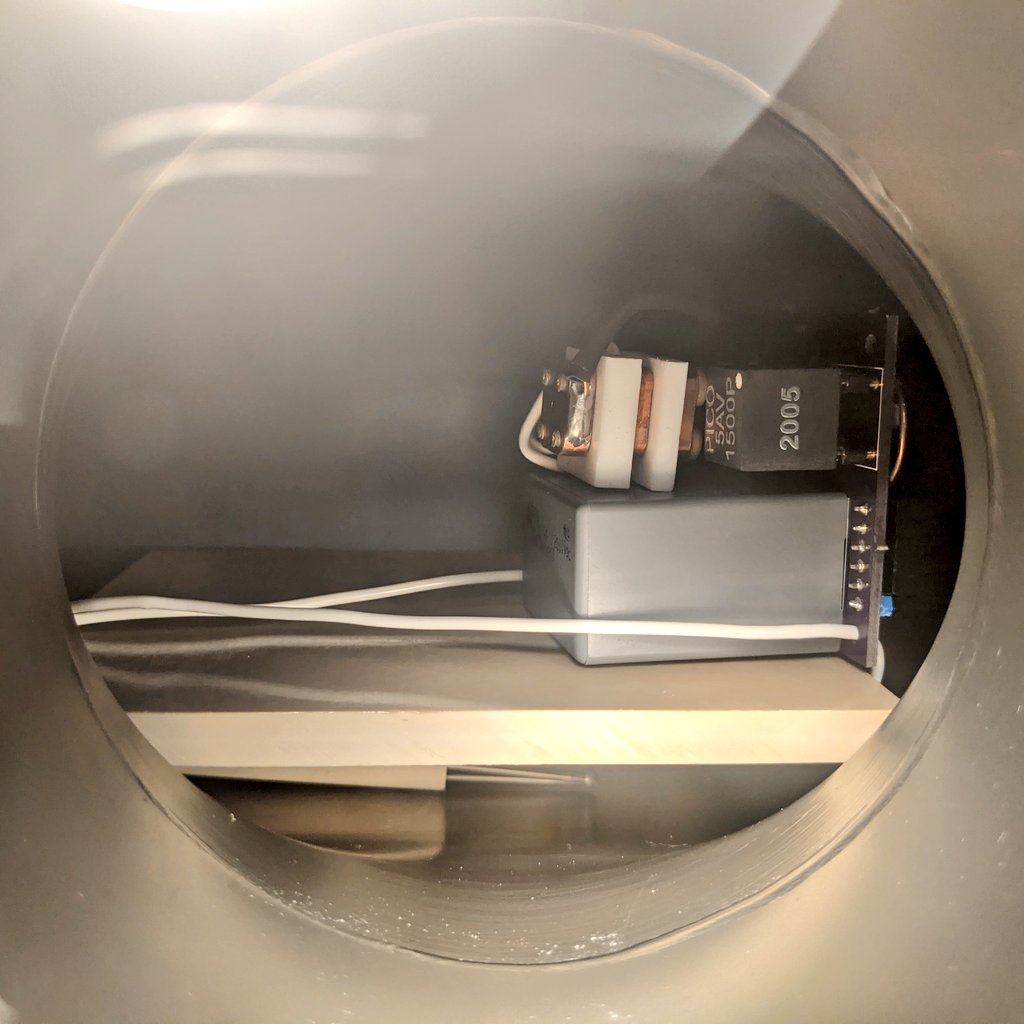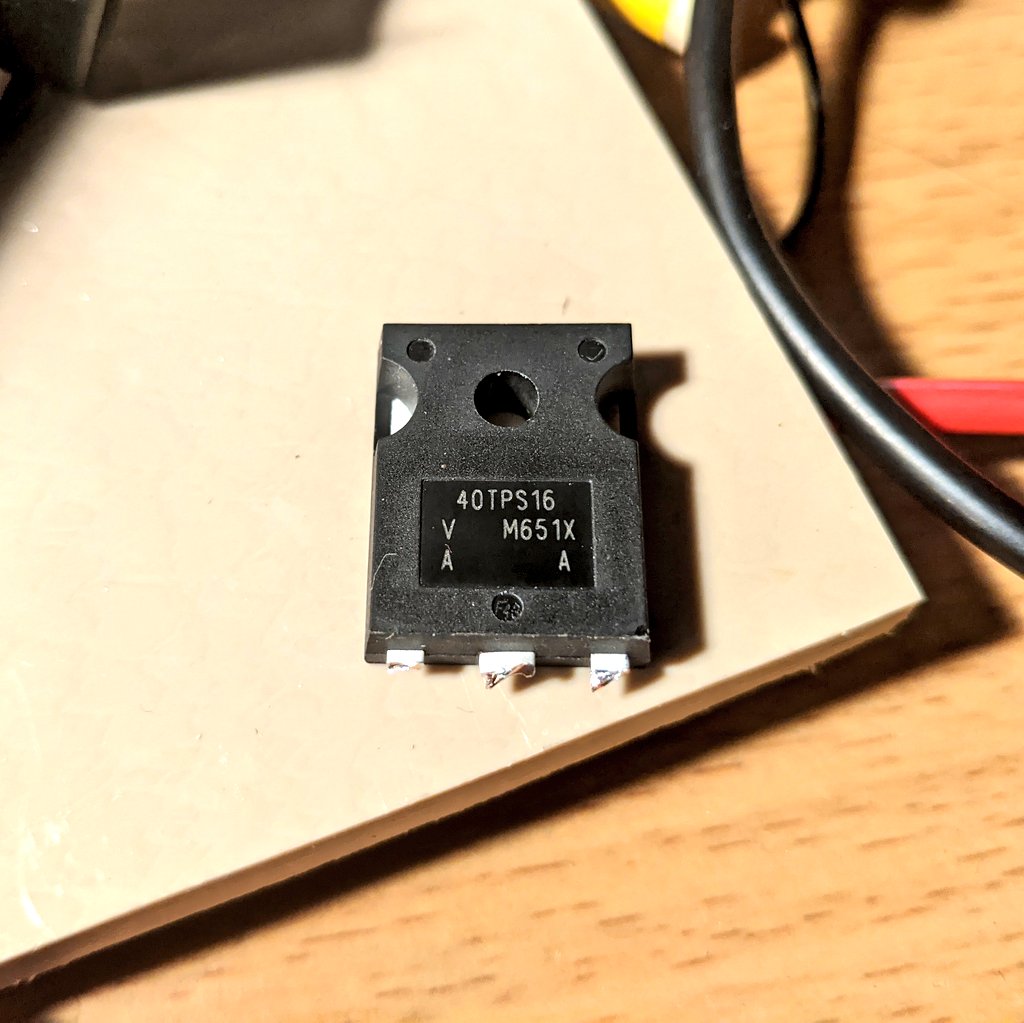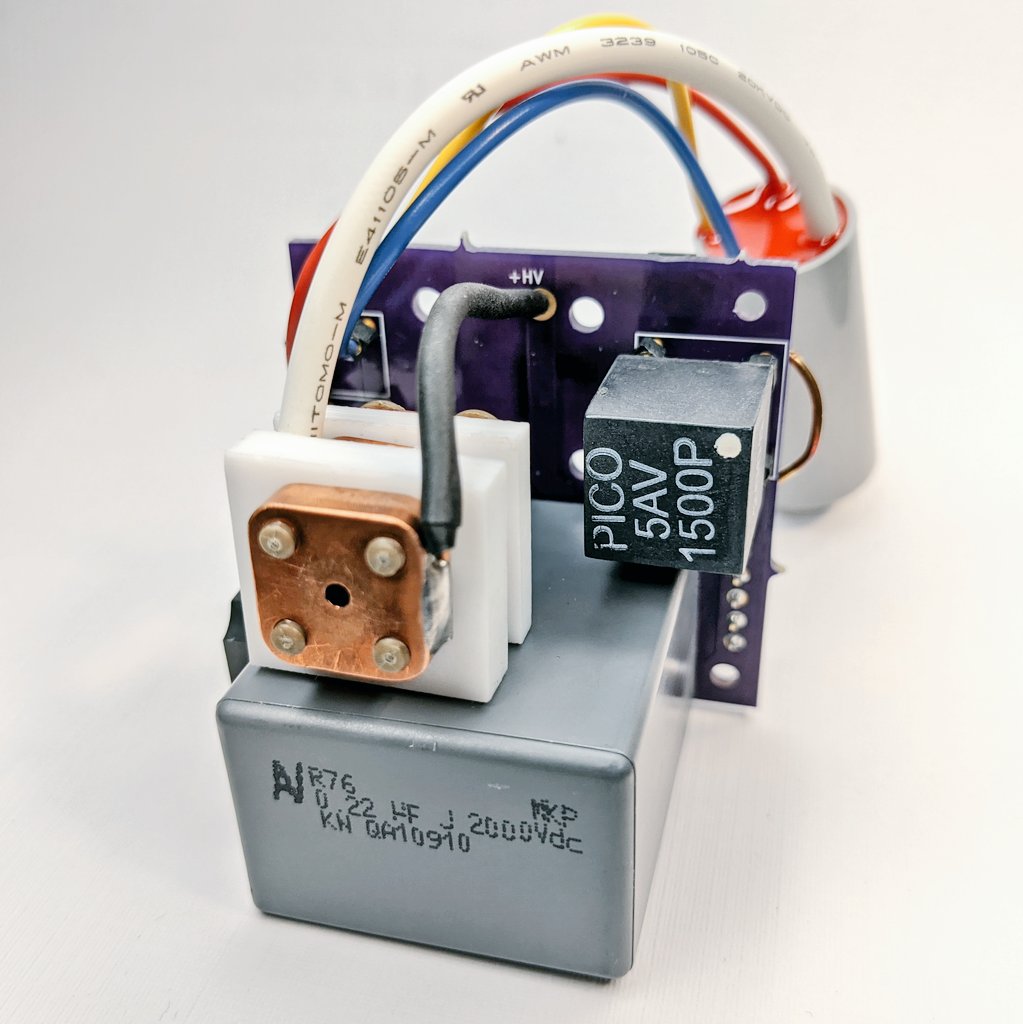Recently, I decided to combine the gPPT3 thruster head with the EPPT1 electronics to explore further improvements to my PPT developments while recycling the current systems I have already worked on. The first test was a resounding success – although i had to massively overdrive the system, eventually causing it to fail, I pushed the thruster to 4Hz operation with no misfires for almost around 1000 shots. After this test, I decided to run additional tests on the system to further improve performance. However, I have experienced significant setbacks and failures with this development since, as well as some truly unusual and puzzling results.
The first of these new tests since the prior high-rep rate test took place on November 10th. The thruster was rebuilt from scratch, incorporating a larger 0.22uF bank, as opposed to the original 0.1uF bank, and mounted into the chamber for testing. Unfortunately, immediately at the start of the test, the thruster experienced failure.
Upon probing the thruster and checking the critical components, my initial hunch was correct – the trigger thyristor was blown.
After this test, a week later I repaired the thruster, this time switching to a much larger -25kV trigger transformer, as opposed to the dual parallel -10kV transformers I was using. I also upgraded the thyristor to a higher current handling one, and added some extra protections into the circuit around the thyristor.
This new test with the modified system was conducted on November 19th. the system was slightly overdriven at 5.5V in to achieve an initial firing rate of 0.5Hz. During the test, I measured 22 shots in 60 seconds with 4 misfires. So slightly under 0.5Hz, with a misfire rate of about 15%.
After about 10 minutes of so, I increased the repetition rate to 1Hz. the system continued to fire reasonably well. During this phase, I counted 56 out of 66 shots in 60 seconds, still about a 15% misfire rate. Test parameters were 5.5Vin, 1.6kV peak, 0.825W.
During the firing, I decided to take a look at the signal seen on the oscilloscope. While I was not looking at any beam or plasma plume, during one of my prior experimental tests with a pulsed neutralizer, I found that the Faraday cup could actually very reliably pick up the pulsed signal shape from the radiated EMF, giving another useful debugging tool during operation.
Eventually, the system became massively unreliable, barely firing with only spurious pulses, forcing me to shut down the test. While nothing onboard the thruster broke, reliability was too poor to continue. Overall i clocked in 1200 shots, bringing the gPPT3 thruster head lifetime to over 4000, and the new electronics to 1200.
For the next test, I decided to attempt to run the thruster with anode side triggering like the EPPT1. This would be the first time the gPPT3 thruster head had ever run with anode side triggering. The test was conducted on November 22nd. Out of all the tests I had run, this yielded the most bizarre results.
Instead of the classic large bluish or pinkish plume I am used to seeing, I got tiny little spurts of whitish, faint plumes.
Looking at the pulse on the oscilloscope was even more strange. Normally, the discharge was around 300ns wide, usually with multiple peaks. However, for this test, the incredibly tiny and weak plume ended up yielding an incredibly wide pulse of 100uS! While I still can’t explain the phenomenon, my gut feeling is that the magnetic field coupled with the reversed electrode polarity with anode side triggering, was causing some unusual interactions during ignition, inhibiting the plume severely.
On November 28th, I conducted yet another round of testing on the thruster. I still kept anode-side triggering with the reversed polarity on the thruster head, however I removed the permanent magnet output nozzle to see if my prior hypothesis was correct. unfortunately during the test, ignition was even worse. I managed to capture one pulse, which ended up being an extraordinarily unique pulse, unlike any I have seen from my PPTs to date. The test did confirm that the magnetic field was causing issues with the plume with anode side triggering, inhibiting the pulse. However, I still cannot explain the resulting plume.
The result was a beautiful white plume emanating from the thruster. I have gotten purple, pink, and blue from the gPPT series, which are all typical PPT plume colors using Teflon fuel. However, I have never seen a white plume from a Teflon PPT before. I think this particular shot is one of my best to date.

After this test, I decided to modify the thruster one more time. for this test, I installed brand new Teflon fuel and insulating blocks, as well as switched the thruster back to standard triggering.
The final test was conducted on December 1st. Start-up was a bit slow, however the thruster did start firing. Plume color was normal, and the system behaved as expected. After warm-up, the thruster was fired stably at a rep rate of 0.5Hz for about 10 minutes, then switched to 1Hz for the remainder of the test.
Looking at the pulse shape on the oscilloscope, the pulse was back to its standard 300ns width as well.
Some time into the test, another bizarre failure occurred. Output just dropped to 0V, however, no indication of shorting was seen. Current draw was normal, which is highly unusual, since electronics failures with this system to date have always resulted in some shorting failure, leading to excessive current draw which can be seen on the input power supply. However this time, there was no indication of shorting, only no output. After about 10 minutes, I got pulsing back inexplicably, however it quickly went back to no output again. After waiting for additional time, operation did not return, and I decided to end the test.
Overall, this last testing campaign was quite a wild ride. i was able to get a ton of data on various operating modes of the system, as well as uncover some new failure modes, and some very unusual operation. I will still be moving forward on this system development, taking lessons learned from prior testing and redesigning the electronics to further improve reliability operating the gPPT3 thruster head.








